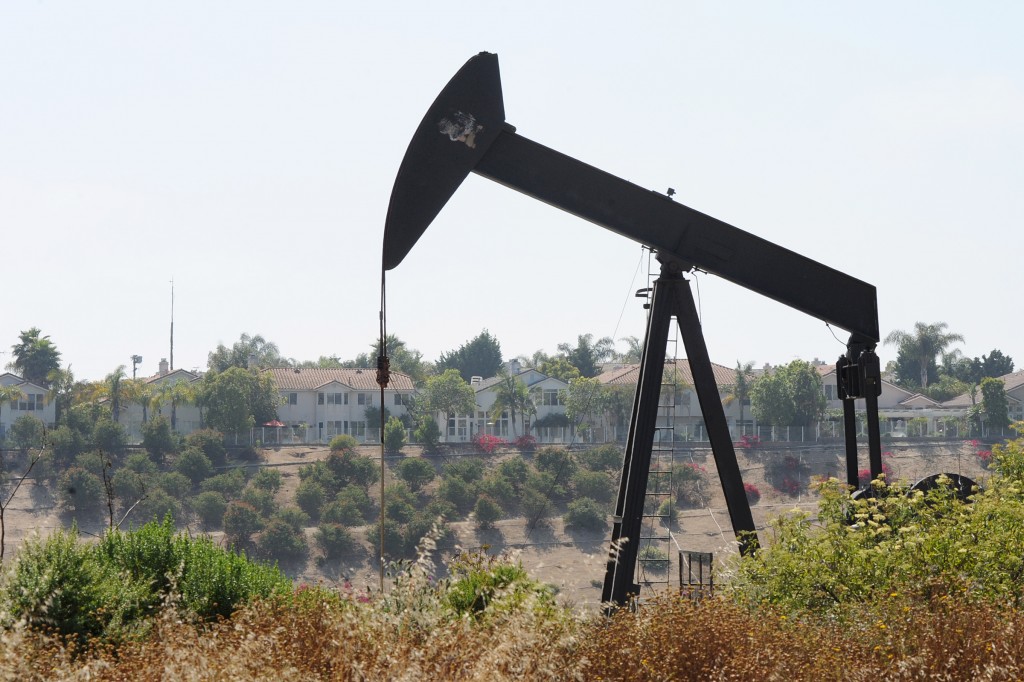THE INGLEWOOD OIL FIELD
|
|
FAST FACTS
WELL COUNT: Approximately 959 active oil wells COMPANY: Freeport McMoRan Oil and Gas, which recently acquired the entire field from PXP SURROUNDING HOMES: 50,000 households sit immediately adjacent Residents woke up to bouts of nauseau and noxious fumes in their homes. When they finally learned that the gases were "nonhazardous," they wondered why they continued to get sick. They found out from an AQMD representative that "nonhazardous" only meant nonexplosive. |
|
CURRENT OPERATIONS Covering approximately 1,100 acres, the Inglewood Oil Field is the largest urban oil field in the United States. Recently, a number of deep wells in the Inglewood Oil Field have been hydraulically fractured to enhance oil recovery. According to a recent study by the California Council on Science and Technology, 100 percent of currently active wells have been fractured. Previously, city officials denied that any hydraulic fracturing occurred. |
"Just because the oil company brings jobs and other benefits, doesn’t mean it can do it at the expense of my health and well-being." |
COMMUNITY IMPACT
Over one million people live within five miles of the massive Inglewood oil field. Noxious diesel fumes and sulfurous odors cause nausea and, in 2006, forced 500 families to evacuate their homes without notice. The oil field “is adjacent to residential areas and other urban land uses where emissions from the operations result in continuous human exposure,” such as the Kenneth Hahn State Recreation Area.
REGULATORY RESPONSE
Although the L.A. County Board of Supervisors adopted a Community Standards District to reconcile differences between the oil industry in the Inglewood oil field and the residents, the oversight of the drilling operations is inadequate and shrouded with misinformation. When the California Council on Science and Technology reported that 100 percent of wells in the Inglewood oil field had been hydraulically fractured, L.A. County Supervisor Mark Ridley-Thomas publicly denied that hydraulic fracturing had occurred and discounted the study's public health findings. In correspondence with the Director of the Los Angeles County Department of Health, the Department confirmed that the health risks are still unknown, agreeing "with the CCST Report that more study is needed at the State and Federal level on the health and safety implications of oil well stimulation and related activities."
Over one million people live within five miles of the massive Inglewood oil field. Noxious diesel fumes and sulfurous odors cause nausea and, in 2006, forced 500 families to evacuate their homes without notice. The oil field “is adjacent to residential areas and other urban land uses where emissions from the operations result in continuous human exposure,” such as the Kenneth Hahn State Recreation Area.
REGULATORY RESPONSE
Although the L.A. County Board of Supervisors adopted a Community Standards District to reconcile differences between the oil industry in the Inglewood oil field and the residents, the oversight of the drilling operations is inadequate and shrouded with misinformation. When the California Council on Science and Technology reported that 100 percent of wells in the Inglewood oil field had been hydraulically fractured, L.A. County Supervisor Mark Ridley-Thomas publicly denied that hydraulic fracturing had occurred and discounted the study's public health findings. In correspondence with the Director of the Los Angeles County Department of Health, the Department confirmed that the health risks are still unknown, agreeing "with the CCST Report that more study is needed at the State and Federal level on the health and safety implications of oil well stimulation and related activities."
